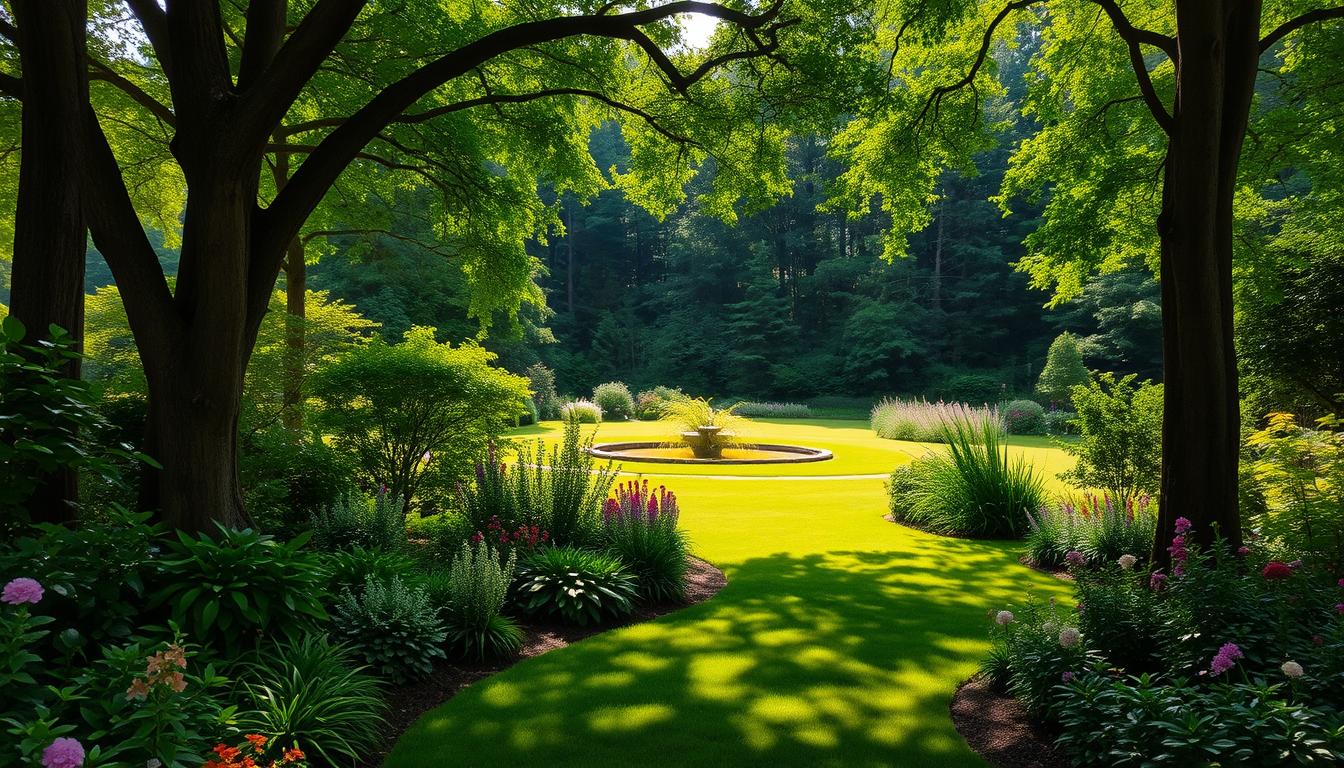Creating a vibrant outdoor space requires a holistic approach to care. Whether you’re tending to a small plot or a sprawling landscape, the right techniques can transform your surroundings. In Minnesota, unique challenges like harsh winters and unpredictable weather demand tailored solutions. Resources from the University of Minnesota Extension offer valuable insights for success.
Healthy landscapes do more than beautify your property. They support pollinators, improve air quality, and provide a sanctuary for wildlife. By focusing on plant selection, soil health, and seasonal maintenance, you can cultivate a thriving environment. Growing food and flowers not only brings personal satisfaction but also enhances property value.
Key Takeaways
- Adopt a holistic approach to care for vibrant outdoor spaces.
- Address Minnesota-specific challenges with expert resources.
- Support pollinators and environmental health through proper maintenance.
- Choose the right plants and focus on soil health for success.
- Enjoy the benefits of growing food and flowers while boosting property value.
Introduction to Yard and Garden Care
A well-maintained outdoor space can transform your home into a haven of beauty and tranquility. Beyond aesthetics, proper care supports biodiversity and reduces pest habitats. Research from Iowa State University Extension highlights how thoughtful plant care and pest management create healthier environments.
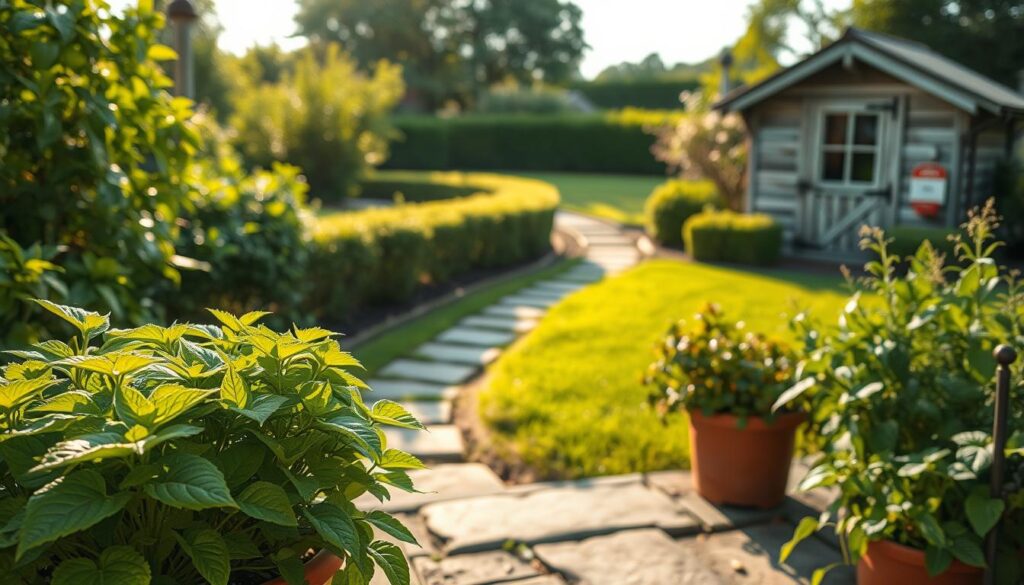
Gardening isn’t just about looks—it’s also great for mental health. Programs like Master Gardener emphasize how tending to plants can reduce stress and improve well-being. Donna Uphus’ Osakis garden is a perfect example, showcasing how multi-season planning can keep your space vibrant all year long.
Understanding the basics is key. Every plant needs sunlight, water, and good soil to thrive. Compatibility between plants is equally important. The University of Minnesota Extension’s “Healthy landscapes, healthy people” initiative underscores the value of these fundamentals.
Pollinators play a crucial role in any landscape. The Bee Squad’s findings show that gardening practices that support bees and butterflies lead to healthier ecosystems. For beginners, resources like Gardening for Beginners offer step-by-step guidance to get started.
Planning Your Yard and Garden Layout
A thoughtful layout can make your outdoor area both beautiful and functional. Start by assessing your space to understand its potential. Tools like sun mapping and soil testing, available through the University of Minnesota Extension, provide valuable insights. These steps ensure your planting choices align with your environment.

Designing for aesthetics and functionality is key. Consider incorporating edible landscapes, like Megan Schnitker’s native plant integrations. These blends of beauty and utility create sustainable spaces. Another idea is to create “garden rooms” with distinct purposes—entertainment, production, or wildlife support.
Spacing is crucial for healthy growth. Account for mature plant sizes to avoid overcrowding. Here’s a quick guide for common plants:
| Plant Type | Spacing (inches) |
|---|---|
| Tomatoes | 24-36 |
| Peppers | 18-24 |
| Lettuce | 6-12 |
For hands-on learning, attend workshops like “Vegetable Garden Basics” at the Cook County Center. Probstfield Farm’s Gardening Field Days also offer practical tips for site preparation. These resources make planning easier and more effective.
Essential Tools for Yard and Garden Maintenance
Having the right tools makes all the difference in maintaining a thriving outdoor space. Whether you’re a seasoned gardener or just getting started, investing in quality equipment ensures efficiency and longevity. Thompson Greenery’s expert staff and resources from the Extension provide valuable recommendations for every need.
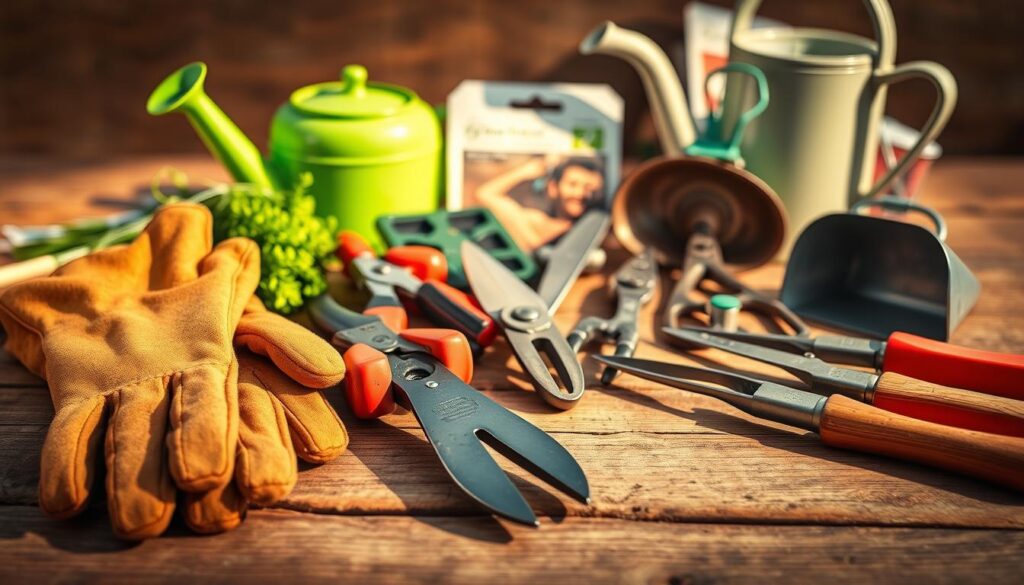
Must-Have Tools for Every Gardener
Ergonomic tools are a game-changer for reducing strain during long hours of work. Master Gardeners recommend items like padded gloves, lightweight shovels, and adjustable pruners. These tools not only make tasks easier but also protect your hands and back.
When choosing between hand tools and power equipment, consider the size of your space. Hand tools are ideal for smaller areas, while power equipment saves time in larger landscapes. Here’s a quick comparison:
| Tool Type | Best For |
|---|---|
| Hand Trowel | Small planting tasks |
| Pruning Shears | Trimming shrubs and flowers |
| Lawn Mower | Large grassy areas |
Investing in Quality Equipment
Proper storage extends the life of your tools. Professional nurseries suggest using pegboards, tool racks, or weatherproof sheds. This keeps equipment organized and protected from the elements.
Cost-effective investments like drip irrigation systems can save water and time. These systems deliver water directly to plant roots, reducing waste and promoting healthier growth.
For hands-on learning, attend the annual “Tool Care 101” workshop at the Turf Management Center. Held every Thursday at 7:30 p.m., this course covers maintenance tips and best practices. It’s a great way to keep your tools in top shape year-round.
Soil Preparation and Improvement
Healthy soil is the foundation of a thriving landscape. It provides essential nutrients, supports root growth, and ensures plants flourish. Proper soil management begins with understanding its composition and needs. Resources from the University of Minnesota Extension offer practical guidance for success.
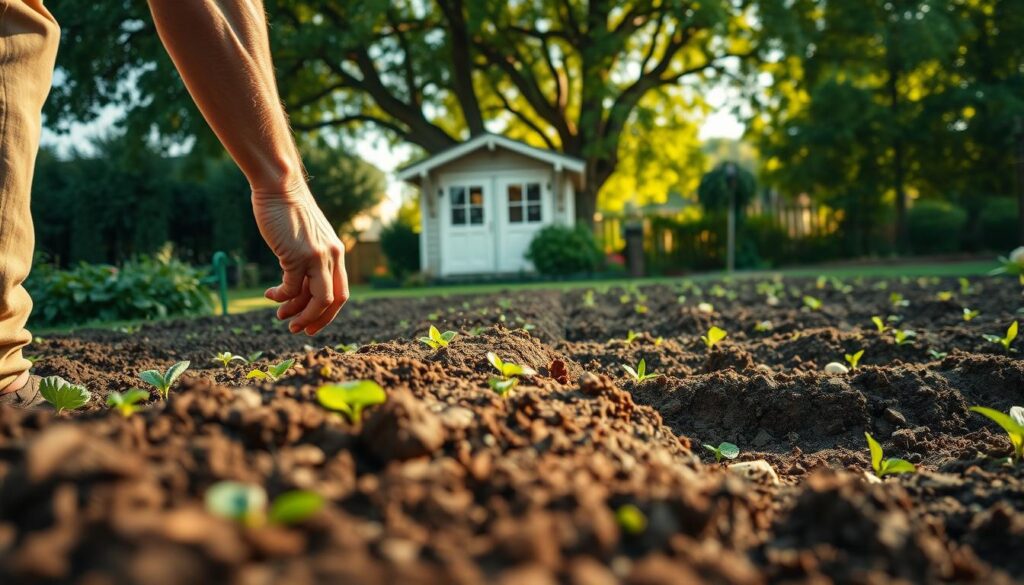
Testing Your Soil
Start by testing your soil to identify its pH and nutrient levels. The University of Minnesota soil testing labs provide detailed reports to help you interpret results. These insights guide your next steps, whether it’s adding compost or adjusting pH.
For example, acidic soils in pine regions often require lime to balance pH levels. Understanding your soil’s unique characteristics ensures tailored solutions for optimal growth.
Amending Soil for Optimal Growth
Composting is one of the most effective methods to improve soil health. Layering compost, like Larry Enfield’s 600-plant donation strategy, enriches the soil with organic matter. This boosts nutrient availability and promotes healthy plant development.
Cover cropping is another excellent technique. Probstfield Farm Field Days showcase how cover crops prevent erosion and improve soil structure. These practices not only enhance growth but also link soil health to food safety in vegetable gardens.
By focusing on soil preparation, you create a strong foundation for a vibrant and sustainable landscape.
Choosing the Right Plants for Your Garden
Selecting the right plants can make or break your outdoor space. The choices you make impact not only aesthetics but also sustainability and maintenance. Native species, for example, thrive in local climates and support pollinators. Exotic varieties, while eye-catching, may require extra care. Balancing these options ensures a vibrant and eco-friendly landscape.
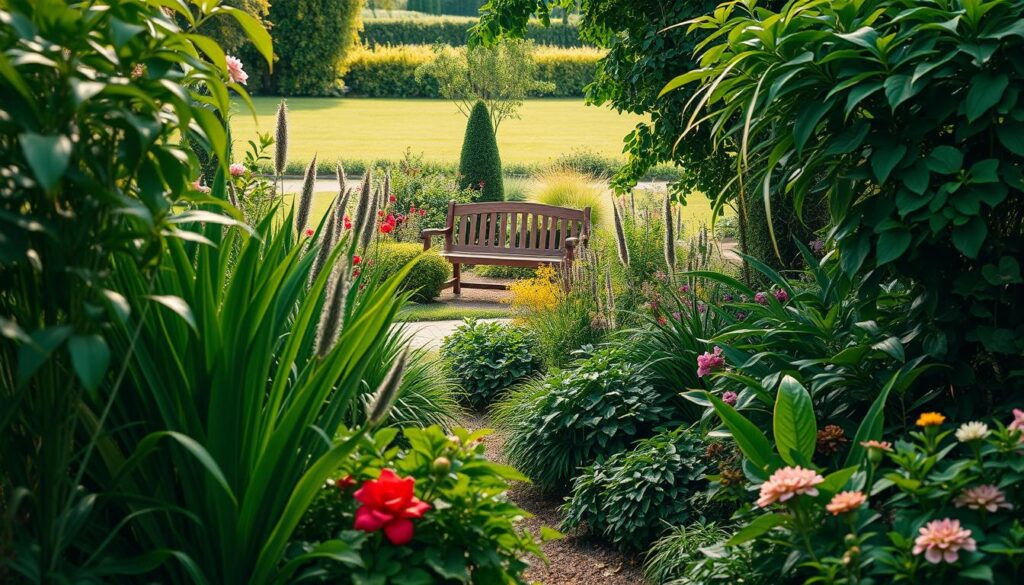
Native Plants vs. Exotic Species
Native plants are well-adapted to local conditions, making them low-maintenance and resilient. Megan Schnitker’s Lakota Made products showcase how native species can enhance biodiversity. For instance, Henderson’s hummingbird habitat success highlights their ecological benefits. These plants also require less water and fertilizer, reducing your environmental footprint.
Exotic species, on the other hand, can add unique beauty to your space. However, they often need more attention to thrive. The University of Minnesota Extension’s Northern Gardener database provides insights into which exotic plants can adapt to local climates. Balancing native and exotic varieties creates a diverse and visually appealing landscape.
Seasonal Planting Guide
Planning your planting schedule ensures year-round beauty and productivity. The Extension’s flowering guides offer bloom sequence planning to keep your space vibrant. For example, early spring bulbs can be followed by summer perennials and fall foliage. This approach maximizes color and interest throughout the seasons.
When it comes to vegetables, consider heirloom vs. hybrid varieties. Heirlooms, like those featured at Thompson Greenery, offer unique flavors and historical significance. Hybrids, however, are often bred for disease resistance and higher yields. Here’s a quick comparison:
| Type | Benefits |
|---|---|
| Heirloom | Unique flavors, historical value |
| Hybrid | Disease resistance, higher yields |
For pollinator-friendly options, Marla Spivak’s Bee Lab research recommends plants like milkweed and coneflowers. These choices support bees and butterflies while adding beauty to your space. By carefully selecting plants, you create a thriving and sustainable landscape.
Watering Techniques for a Healthy Garden
Effective water management ensures your plants stay healthy and vibrant. Proper techniques not only support growth but also conserve resources. From drip irrigation to rain barrels, there are many ways to optimize water use. The University of Minnesota Extension’s “Water Wisely” initiative provides valuable guidance for every gardener.
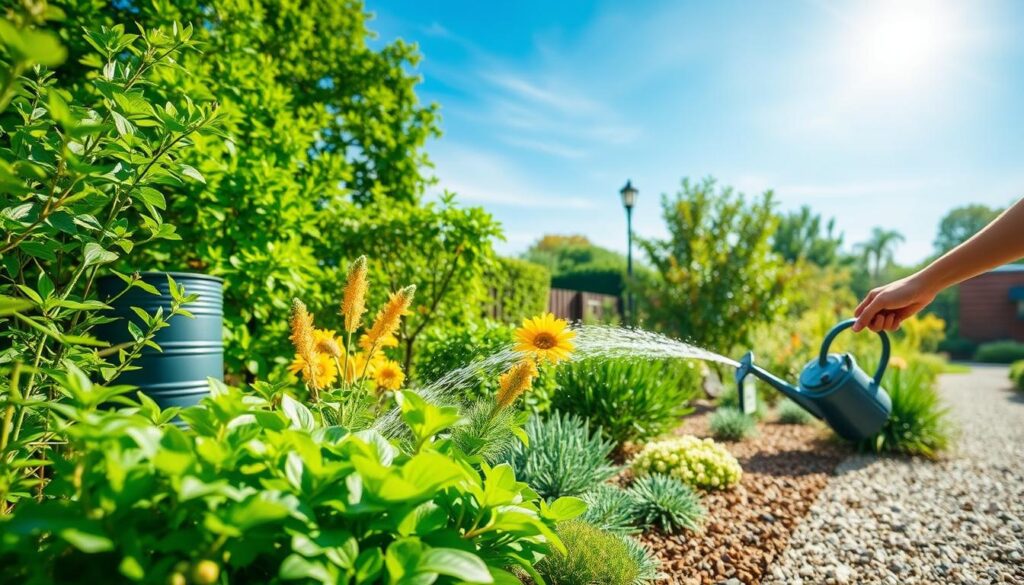
Efficient Watering Methods
Drip irrigation is a game-changer for delivering water directly to plant roots. This method reduces waste and promotes healthier growth. Extension YouTube tutorials make installation easy, even for beginners. Another option is rain barrel systems, like those featured in Mankato garden tours. These collect and store rainwater for later use, cutting down on utility costs.
For drought-resistant lawns, the “Hort Shorts” video series offers practical tips. Master Gardeners also recommend mulching to reduce evaporation in vegetable plots. These strategies ensure your plants get the water they need without excess waste.
Conserving Water in Your Yard
Xeriscaping is a sustainable approach that minimizes water use. Adapted for Minnesota winters, it incorporates native plants that thrive with little irrigation. This method not only saves water but also reduces maintenance. Smart Gardens podcast episodes dive deeper into these principles, offering actionable advice.
By adopting these techniques, you can create a lush landscape while supporting conservation efforts. Whether you’re a seasoned gardener or just starting, these methods make a difference.
Pest Management and Control
Keeping your outdoor space pest-free is essential for a thriving landscape. Unwanted insects can damage plants, disrupt growth, and harm pollinators. By understanding pest behavior and using effective control methods, you can protect your plants and maintain a healthy environment.
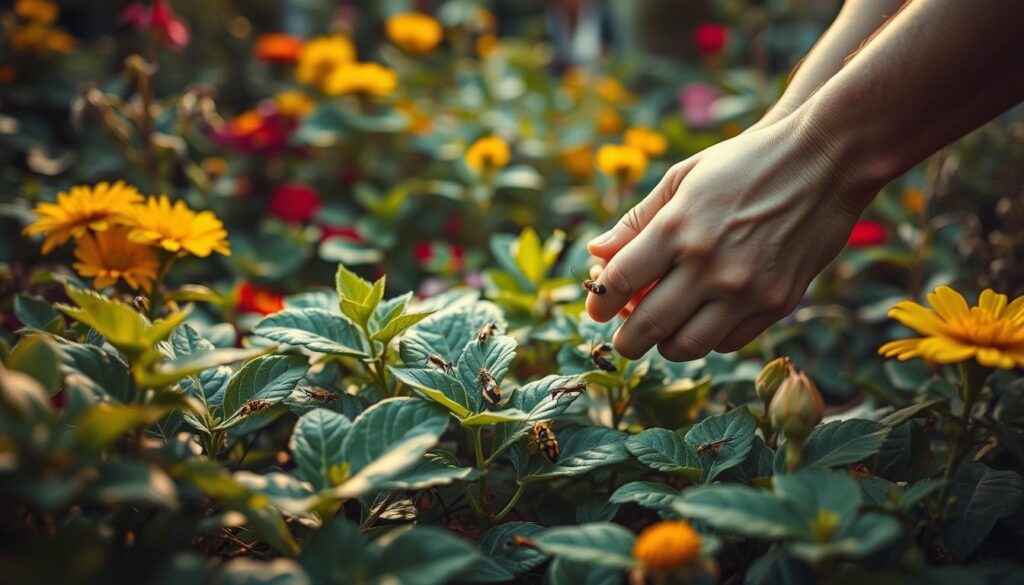
Identifying Common Garden Pests
The first step in pest management is accurate identification. The University of Minnesota Extension’s “What’s Wrong With My Plant?” tool helps diagnose issues quickly. Their insect identification flowcharts are also a valuable resource for spotting common culprits like aphids, Japanese beetles, and spider mites.
For example, Japanese beetles are notorious for damaging leaves and flowers. Traps can reduce their numbers, but milky spore treatments offer a longer-term solution. Knowing which pests are present allows you to choose the right control method.
Organic vs. Chemical Pest Control
When it comes to pest control, you have two main options: organic and chemical. Organic methods, like companion planting, are eco-friendly and safe for pollinators. Donna Uphus’ intercropped gardens demonstrate how strategic plant pairings can deter insects naturally.
Chemical treatments, on the other hand, can be more effective for severe infestations. However, they require careful handling to ensure safety for people and pollinators. Marla Spivak’s research emphasizes the importance of timing treatments to minimize harm to bees and butterflies.
“Protecting pollinators while managing pests is not just possible—it’s essential for a sustainable ecosystem.”
For those interested in chemical treatments, pesticide certification courses are available. Held every Thursday at 7:30 p.m., these courses teach proper application techniques and safety measures. Whether you choose organic or chemical methods, the goal is to protect your plants while supporting the environment.
| Control Method | Pros | Cons |
|---|---|---|
| Organic | Eco-friendly, safe for pollinators | May require more effort |
| Chemical | Effective for severe infestations | Requires careful handling |
By combining these strategies, you can create a balanced approach to pest management. This ensures your plants thrive while maintaining a healthy ecosystem.
Lawn Care Essentials
Proper lawn care ensures a lush, green landscape year-round. A healthy lawn not only enhances curb appeal but also supports the environment. From mowing to fertilizing, each step plays a vital role in maintaining vibrant landscapes. Resources from the University of Minnesota Extension and Turf Management Center provide expert guidance for success.
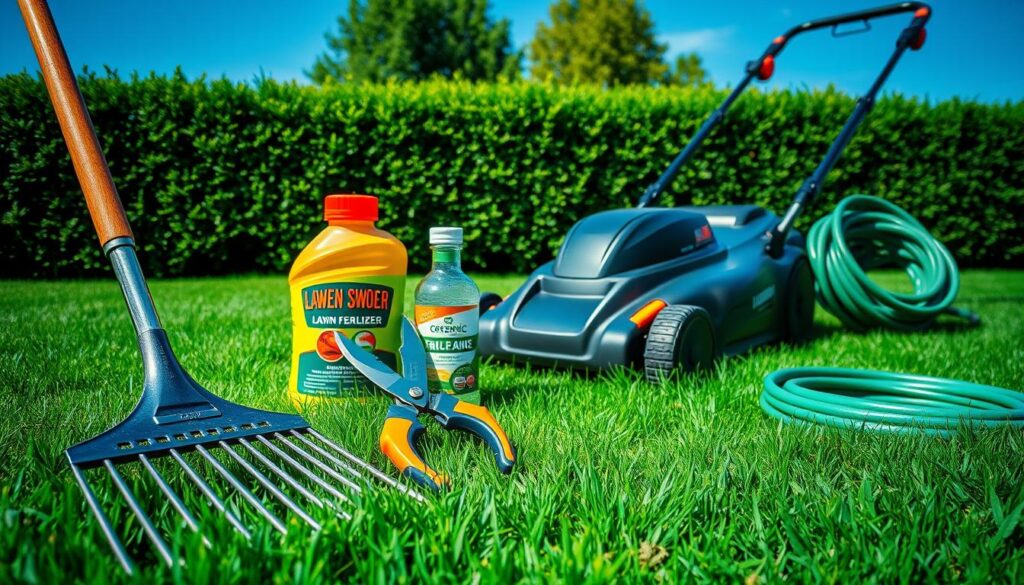
Mowing and Trimming Tips
Mowing is more than just cutting grass—it’s about promoting healthy growth. Grasscycling, a technique recommended by the Extension, involves leaving clippings on the lawn. These clippings decompose, returning nutrients to the soil. This method reduces waste and supports sustainable lawn care.
For trimming, keep blades sharp to avoid damaging grass. Adjust mower height based on the season. Taller grass in summer shades the soil, reducing water evaporation. These small adjustments make a big difference in maintaining a thriving lawn.
Fertilizing and Aerating Your Lawn
Fertilizing provides essential nutrients for growth, but overuse can harm your lawn and the environment. Case studies highlight how excess fertilizer can contaminate water sources. Follow Extension guidelines to apply the right amount at the right time.
Aeration is another key practice. Workshops at the Turf Management Center demonstrate techniques to improve soil health. By creating small holes in the soil, aeration allows air, water, and nutrients to reach grass roots. This promotes deeper root growth and a healthier lawn.
Incorporating clover into your lawn, as featured in Yard and Garden News, supports pollinators like bees. This eco-friendly approach enhances biodiversity while maintaining a green space.
“A well-maintained lawn is not just beautiful—it’s a vital part of a healthy ecosystem.”
For beginners, the “Lawn Care for Beginners” seminar on February 13 at 7:30 p.m. offers practical tips. Whether you’re a seasoned gardener or just starting, these techniques help you master the art of lawn care.
Pruning and Trimming Trees and Shrubs
Proper pruning and trimming are essential for maintaining the health and beauty of your trees and shrubs. These practices not only enhance appearance but also promote growth and prevent disease. Understanding the right techniques and timing ensures your landscape thrives year-round.
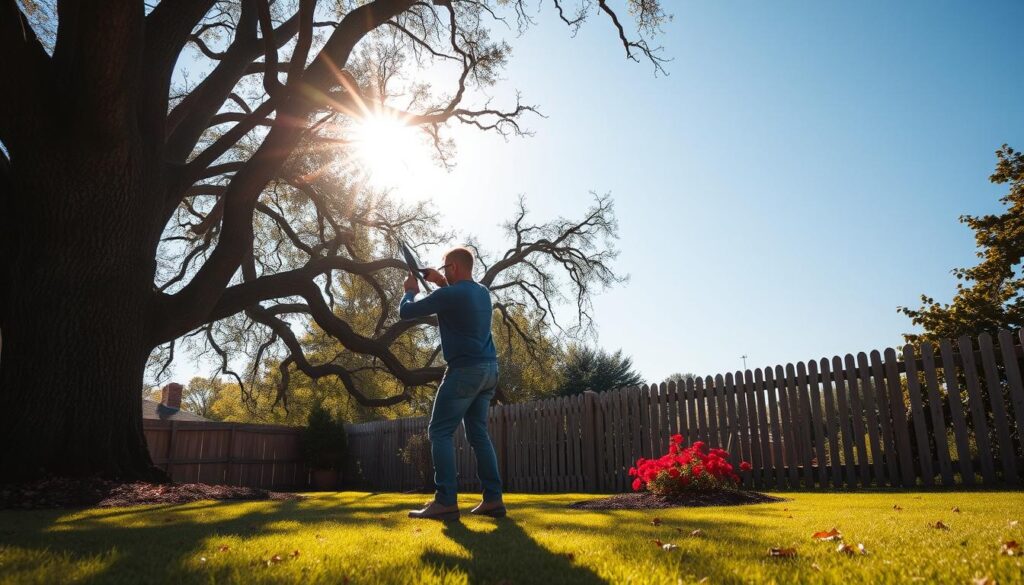
When and How to Prune
Timing is critical when it comes to pruning. For most trees, late winter or early spring is ideal, as it minimizes stress and encourages new growth. The University of Minnesota Extension’s video resources demonstrate proper pruning cuts, ensuring clean and healthy results.
For shrubs, rejuvenation pruning can bring overgrown plants back to life. Master Gardeners recommend cutting back one-third of the oldest stems each year. This technique allows for gradual renewal without shocking the plant.
Maintaining Healthy Trees and Shrubs
Healthy trees and shrubs require more than just pruning. Preserving cavity trees, as highlighted in UMN biodiversity studies, supports wildlife habitats. These trees provide shelter for birds and small mammals, enhancing your landscape’s ecological value.
Identifying diseased trees early is also crucial. Guides from the Plant Pathology Department help spot issues like fungal infections or pest damage. Early intervention can save your trees and prevent the spread of disease.
“Pruning isn’t just about aesthetics—it’s about creating a healthier environment for your plants and wildlife.”
For hands-on learning, attend the “Tree Care Basics” workshop on January 23 at 7:30 p.m. This session covers everything from pruning techniques to disease prevention. Whether you’re a beginner or an experienced gardener, these tips will elevate your care routine.
- Use Extension video resources for proper pruning cuts.
- Preserve cavity trees to support wildlife habitats.
- Identify diseased trees early with Plant Pathology guides.
- Rejuvenate overgrown shrubs with Master Gardener techniques.
Harvesting and Using Your Garden Produce
Harvesting your produce at the right time ensures maximum flavor and nutrition. Proper techniques not only enhance quality but also extend the shelf life of your yield. Whether you’re growing tomatoes, peppers, or root vegetables, understanding the basics of harvesting and storage is key to enjoying your hard work.
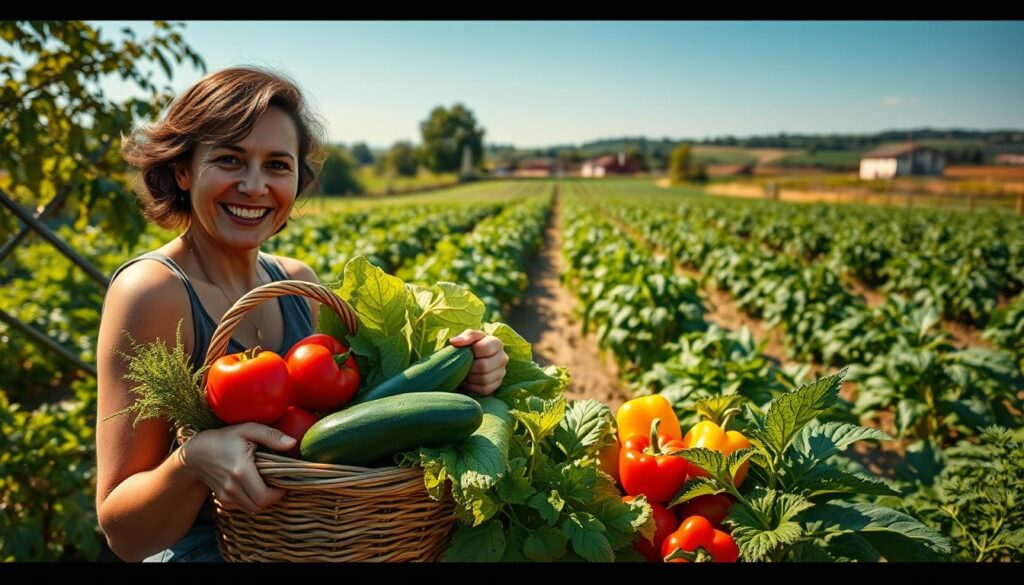
Best Practices for Harvesting
Timing is everything when it comes to harvesting. Use the University of Minnesota Extension’s ripening charts to determine the optimal time for picking. For example, tomatoes should be harvested when fully colored but still firm. Peppers, on the other hand, can be picked green or left to ripen further for a sweeter taste.
Handle your vegetables with care to avoid bruising or damage. Use clean, sharp tools for cutting stems and avoid pulling plants directly from the ground. Proper handling ensures your produce stays fresh and safe for consumption.
Preserving and Storing Your Yield
Once harvested, preserving your vegetables is essential for long-term enjoyment. Canning is a popular method, and USDA guidelines provide step-by-step instructions for safe practices. Donna Uphus’ antique food storage solutions, like root cellars, offer functional and stylish ways to keep your produce fresh.
For Minnesota’s colder climates, cold storage is ideal for root vegetables like carrots and potatoes. Keep them in a cool, dark place to maintain their quality. The “Preserving the Bounty” webinar series, held every Thursday at 7:30 p.m., offers expert tips on these techniques.
| Vegetable | Storage Method | Duration |
|---|---|---|
| Tomatoes | Room temperature | 1-2 weeks |
| Carrots | Cold storage | 4-6 months |
| Peppers | Refrigeration | 1-2 weeks |
By following these practices, you can enjoy fresh, nutritious vegetables year-round. Proper harvesting and storage not only enhance flavor but also ensure food safety and sustainability.
Conclusion: Enjoying Your Lush Landscape
Transform your outdoor area into a thriving ecosystem with these expert tips. Whether you’re a seasoned gardener or just starting, there’s always more to learn and explore. Consider joining Master Gardener programs, like Mary Pettit’s senior outreach, to deepen your knowledge and give back to the community.
Stay inspired throughout the year by tuning into spring gardening episodes on the Smart Gardens podcast. These resources offer fresh ideas and practical advice to keep your landscape vibrant. Don’t forget to create habitat corridors using Bee Squad research to support pollinators and enhance biodiversity.
Mark your calendar for seasonal events like the Henderson Hummingbird Hurrah on February 13 at 7:30 p.m. For ongoing support, utilize the Extension’s Plant Diagnostics service to address any plant health concerns. With these tools and tips, you’ll enjoy a lush, thriving outdoor space for years to come.

